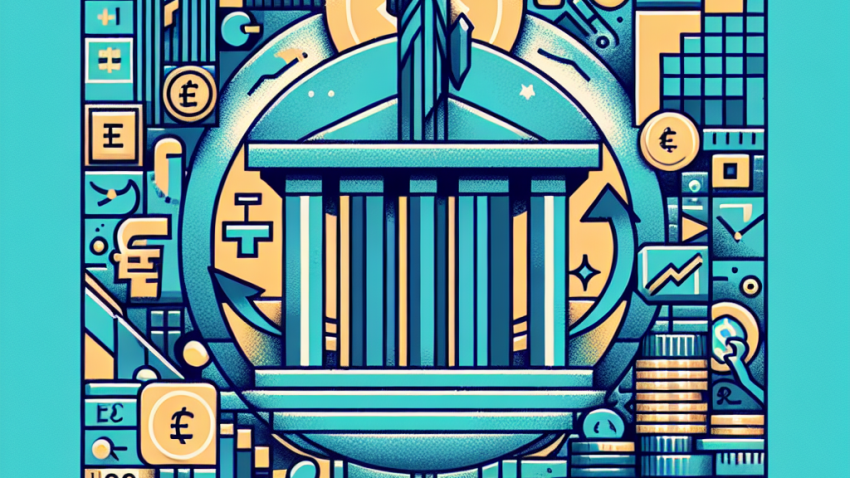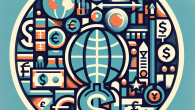
Macroprudential Frameworks and the Mirage of Financial Stability
The Mechanics Behind Global Inflation: A Macroeconomic Dissection
As someone who’s spent the better part of three decades analyzing global economic cycles, I, Dr. Alistair P. Whitmore, welcome you aboard this intellectual voyage. Our destination? A lucid, sharply examined understanding of global inflation — that beast with a thousand faces. What causes it, how it varies among countries, and why it matters more in 2024 than ever before. Buckle up; no calculator required, but do mind your Keynes and remember: inflation isn’t just higher prices, it’s the erosion of monetary sanity.
What Is Inflation, Really?
Inflation refers to the rate at which general price levels rise and the purchasing power of currency declines. When your morning espresso costs $3 today and $3.20 next year, that’s inflation creeping into your wallet – bean by bean, cent by cent. More technically, it’s a macroeconomic condition typically expressed in percentage terms and calculated via indices such as the Consumer Price Index (CPI) or the Producer Price Index (PPI).
However, not all inflation is created equal. There’s a nuanced dance of causes behind it, some benign, others more malignantly symptomatic of underlying structural rot. To understand global inflation in our current climate, we must first understand what fans its flames.
Primary Drivers of Global Inflation
1. Cost-Push Inflators: The Price of Input Pressures
Cost-push inflation occurs when production costs increase, prompting businesses to pass those costs on to consumers. Classic culprits include:
- Rises in crude oil prices
- Raw material shortages
- Labour market bottlenecks
- Global supply chain disruptions
As we saw during the COVID-19 pandemic and the Russia-Ukraine conflict, even modest shocks to global logistics or key commodities can lead to cascading price hikes across multiple economies. The bottleneck at the Port of Qingdao? Not just a logistical hiccup but a catalyst for cost-push inflation from Tokyo to Toronto.
2. Demand-Pull Inflation: The Party That Got Too Loud
Then there’s demand-pull inflation — the economic equivalent of an overbooked restaurant with limited seating. When aggregate demand outpaces supply, prices increase. It’s the direct result of too much money chasing too few goods.
Reasons for demand overflow may include:
- Expansive fiscal stimulus (hello, COVID-era checks)
- Ultra-loose monetary policy
- Rapid wage growth in overheated markets
Demand-pull inflation is common in economic recoveries, where consumers and investors turn euphorically optimistic, often prematurely so.
3. Exchange Rate Influence: Currency Matters
A depreciating national currency makes imports more expensive. For countries heavily reliant on imported goods (read: almost all of us), this can lead to imported inflation. When your nation’s currency weakens against the U.S. dollar or euro, imported oil, electronics, and even grains suddenly become pricier.
Nations like Argentina, Turkey, and Egypt have experienced this firsthand. Monetary policy missteps precipitating currency crises can become incubators for inflationary spirals.
Inflation Across the Globe: Cases in Contrast
United States: The Fed’s Tightrope Walk
After a bout of decade-high inflation post-pandemic — peaking at over 9% in mid-2022 — the Federal Reserve initiated an aggressive rate-hiking cycle. As demand cooled and supply chains normalized, inflation has retreated to around 3.2% in 2024. Yet, core inflation remains stubborn, especially in services.
Eurozone: Energy-Driven Volatility
In the Eurozone, inflation has gyrated wildly from energy shocks stemming from Eastern Europe’s geopolitical turmoil. Germany and Italy, import-dependent and with fragile energy security, saw inflation touching 10% briefly in 2022. Current figures reside in the 4% range, but instability persists due to uncertain supply agreements and Green Deal transition costs.
Japan: The Rising Sun Sparks Inflation?
The Land of the Rising Sun, after decades of deflation or near-zero inflation, finally sees consistent upward momentum in prices — though still mild by global standards (~2.7%). The Bank of Japan’s policy divergence from global central banks, alongside a weak yen, has underscored this surprising inflationary blip.
Emerging Markets: A Perfect Storm
Emerging markets have faced the most brutal form of inflation — a blend of imported inflation, capital outflows, depleting reserves, and fiscal mismanagement. Countries like Sri Lanka and Pakistan have seen inflation exceed 30%, with social unrest following in lockstep. It’s not just an economic issue but a humanitarian one.
The Central Banker’s Toolbox
Controlling inflation is the sacred duty (and occasional nightmare) of central banks. Their toolkit includes:
- Interest Rate Hikes: Making borrowing more expensive to dampen demand.
- Monetary Contraction: Lowering the money supply via open market operations.
- Currency Intervention: Stabilising the exchange rate to counter imported inflation.
Of course, each tool carries trade-offs. Overaggressive tightening can curtail growth, stir unemployment, and even tip economies into recession — as we saw in the Volcker-era U.S. economy of the 1980s.
Why Should You Care?
If you think inflation is just something for policy wonks and central bankers to worry about, think again. It affects everything:
- Your mortgage rate
- The price of your groceries
- Your bond yields
- Even your next vacation
For businesses, inflation means recalibrating wages, reevaluating pricing strategies, and hedging against currency risks. For governments, it reshapes political fortunes and electoral outcomes.
A Final Note from the Desk of Dr. Whitmore
Inflation is not merely a number released every quarter; it’s a living, breathing reflection of our economic expectations, fears, and realities. While central banks play a lead role in controlling it, the onus is also on individual investors and policymakers to stay informed and strategic.
If you’re curious about more macroeconomic puzzles, geopolitical chess moves, or all things IMF-worthy, browse our About Us page or feel free to contact us.
Until next time – Eyes on the yield curve, ears tuned to the policy statements, and always, always hedge your optimism.









Leave a Reply